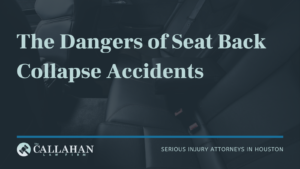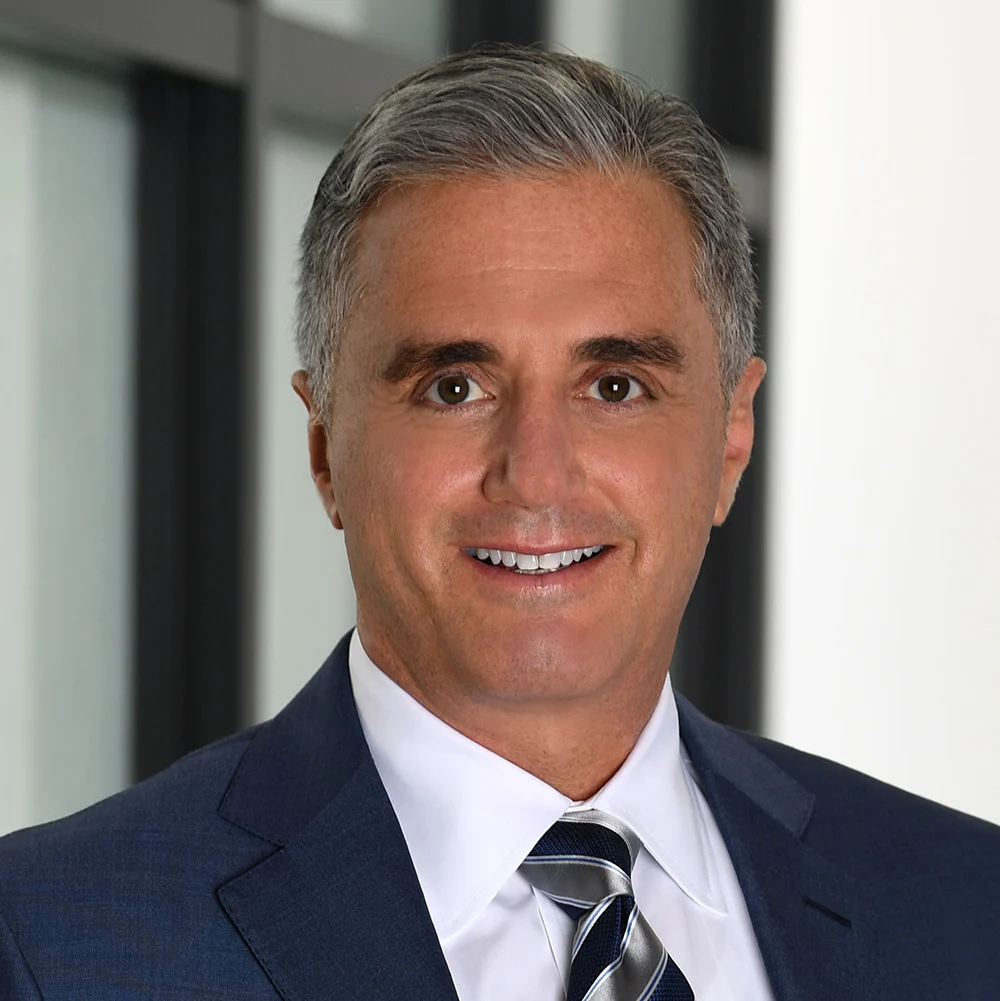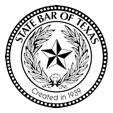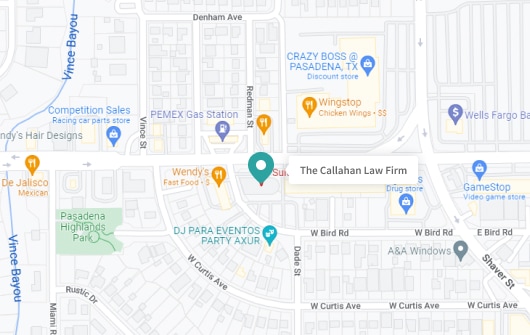The Dangers of Seat Back Collapse Accidents

A CBS investigation has found that an out-of-date government safety standard is putting drivers and their families in danger. In their six-year study, they identified over 100 people who were either severely or fatally injured by seat back failures. Vehicle front seats—particularly, the seat backs—can collapse in rear-end accidents, pitching drivers and those sitting in the front passenger seat backwards. In addition to injuring front-seat passengers, seat back collapse accidents are extremely dangerous for backseat passengers as well.
What Happens in A Seat Back Collapse Accident?
Typically, seat back failure occurs in rear-end car accidents. When a vehicle is rear-ended, the force of the impact can cause the front seats can break. The momentum then launches the seat backwards, sending the front seat occupant flying into the backseat. This is extremely dangerous; front seat passengers who have been in seat collapse accidents have suffered injuries varying from whiplash to paralysis, and in some cases, they have even been ejected through the back window.
In addition to being a major hazard for front seat passengers, seat back collapse accidents can also injure a passenger sitting in the backseat. When the front seat and occupying passenger are launched backwards, they can strike the person sitting in the backseat. The force of that impact has been known to cause severe injuries for the backseat passenger, including traumatic brain injuries, spinal cord injuries, paralysis, and in some cases, death. Unfortunately, since young children are primarily the ones sitting in the back of the vehicle, they are the most at-risk of this hazard.
A Larger Issue at Hand
In their investigation, CBS reported that this problem is not unique to any one vehicle make or model. This problem spans across the entire automotive industry, with vehicles of various brands and sizes being affected. Because of this, it is nearly impossible for a recall to be issued. Furthermore, most automakers argue that their vehicles do meet the federal safety standard.
While generally true, this points to a larger issue. Safety advocates note that the federal safety standards for seat back safety have not been updated since their introduction over 50 years ago. Established in 1967, the Federal Motor Vehicle Safety Standard (FMVSS 207) for car seats states that each forward-facing occupant seat should be able to withstand backwards and forwards forces 20 times the weight of the seat applied, and that a seat should “remain in its adjusted position during the application of each force.”
Safety advocates have been pushing for seat modification for decades with no luck. In March of 2016, the Center for Auto Safety petitioned that the National Highway Traffic Safety Administration (NHTSA) take action to prevent seat back collapse accidents, and urged them to warn parents of the dangers of placing their children’s car seats in a forward-seating position. Alongside the petition, they included a timeline documenting the history of collapsing seat backs, the injuries they have caused, and the NHTSA’s knowledge of seat back collapse accidents. They cite a language modification made in 1967 that changed the purpose of FMVSS 207 from “preventing failure” to “minimizing the possibility of failure.” In 1974, the NHTSA announced they intended to update seating safety standards and requiring more rear-impact crash testing. However, thirty years later, it scrapped the amendment process, stating in 2004 that more research was required to make informed decisions on how to best amend the standard.
A few months after the petition was filed, a letter was sent to the NHTSA Administrator Mark Rosekind from senators Ed Markey of Massachusetts and Richard Blumenthal of Connecticut. In the letter, the senators urged the NHTSA to “amend applicable Federal Motor Vehicle Safety Standards to better protect back seat passengers by preventing the occurrence of seat back failures during car accidents,” citing a study done by the Center for Auto Safety that found approximately 50 children were fatally injured in a seat back collapse accident over the span of 15 years.
They also stated that they had queried sixteen auto manufacturers about the strength and mechanics of their seats and asked the companies to relay information about any known injuries or fatalities sustained by seat back collapse accidents over the prior decade. Most of the manufacturers “claimed they sufficiently meet or exceed seat back strength standards,” failing to comment further.
Senators Markey and Blumenthal noted that these automakers “cannot credibly claim that developing seats that do not collapse and kill children is too complicated, while simultaneously touting complex technological advancements of self-driving cars and computer interfaces in dashboards.” However, since manufacturers are not pushing to identify and solve this problem on their own accord, the senators requested that the NHTSA “identify the appropriate adjustments that must be made to seat back strength so that they do not collapse in rear-end collisions and propose those changes in hopes of updating the federal standard.”
What Are We Doing About This Problem?
In their investigation, CBS found that Honda had installed a shield on the recliner rod in one of its later models, which could strengthen the seat and prevent seat back collisions from occurring. Experts estimate that installing this life-saving modification would cost less than ten dollars per vehicle. However, with no update to federal safety standards, manufacturers are not motivated to make change on their own.
Because of this, lawmakers are working to introduce legislation that will update the federal safety standard for car seats. Senators Markey and Blumenthal, recently brought forward the Modernizing Seatback Safety Act, which would require auto manufacturers and the National Highway Transportation Safety Administration (NHTSA) to strengthen seat standards within the next couple of years. Introduced in July of 2020, the Modernizing Seat Back Safety Act states that that thousands of preventable fatalities and serious injuries have occurred due to lax seat safety standards, and that “seat structural failures in passenger motor vehicles pose a significant public health and safety threat” for drivers and their families alike.
In a statement, Senator Markey said that “seat backs are failing because NHTSA is failing to require higher standards,” and that by failing to install safety features, automakers are putting families at risk. The bill, if enacted, would require the Department of Transportation to revise seating safety standards to reduce injury potential and severity in car accidents. The bill offers a two-year deadline from enactment for all parties to reach compliance.
Still, even with the passage of this bill and implementation of safer seat-backs, this will remain an issue for some time. The new regulations would only apply towards newer vehicle models, meaning that the adoption of this technology would be slow as these new, safer vehicles are slowly grandfathered in. Regardless, victims of seat back collapse accidents and safety advocates state that the standard must be amended. “Just because a small number are injured doesn’t mean you shouldn’t do something,” a safety researcher who formerly worked for the NHTSA said. “For the people who are inured, it’s very important.”
—
If you or a loved one has been injured in an accident involving a defective product, it’s important that you speak with a Products Liability Lawyer today to ensure your rights are protected. Call our Defective Product lawyers today at 713-224-9000, or fill out our contact form here.

Michael S Callahan is an attorney and founder of The Callahan Law Firm. He focuses his practice on representing individuals and families in personal injury cases involving motor vehicle and truck accidents, workplace accidents and defective products. With over 25 years of experience, he is dedicated to fighting on behalf of people whose lives have been forever altered by the negligence and carelessness of corporations and individuals. Originally trained as a mechanical engineer, Michael has been practicing law and fighting for justice for those who need it most since 1994. He is board-certified in Personal Injury Trial Law by the Texas Board of Legal Specialization and a member of various esteemed legal associations. Outside of work, Michael enjoys spending quality time with his family, outdoor activities, and continually striving to improve as a trial lawyer and human being.











